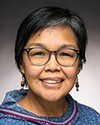[Member spoke in Inuktitut as follows:]
ᖁᔭᓐᓇᒦᒃ, ᐋ, ᐅᓇ ᑭᖑᓪᓕᖅ ᐊᐱᕆᔪᒪᔭᕋ ᕉᕆ ᐆᑳᓄᕐᒧᑦ, ᐋᒻ, ᑕᐃᒪᓐᖓᓂᒃ, ᐋ, ᒐᕙᒪᑐᖃᒃᑯᑦ, ᐋ, 46ᓂᒃ ᐊᕐᕌᒍᓂᒃ ᐋ, 1951ᒥᒃ 1997ᒧᑦ ᐱᒋᐊᖅᓱᒍ ᐊᑭᓕᖅᑐᐃᓚᐅᖅᓯᒪᒻᒪᑕ ᐃᓕᓐᓂᐊᕐᕕᓐᓂᒃ ᓴᖅᑭᑦᑎᖁᔨᓪᓗᑎᒃ ᑖᒃᑯᐊ ᐃᓕᓐᓂᐊᕐ− ᕕᒃᓴᐃᑦ ᐃᖅᑲᓇᐃᔭᖅᑎᖃᖅᓱᑎᒡᓗ ᑖᒃᑯᐊ ᓄᓇᕘᑦ ᐃᓗᐊᓂ 13ᖑᓚᐅᖅᓱᑎᒃ, ᑖᒃᑯᐊ, ᐋ, ᐃᓕᓐᓂᐊᕐᕖᑦ ᓴᖅᑭᑕᐅᔪᑦ ᐃᒪᓐᓇ ᐱᔾᔪᑎᖃᓚᐅᕐᒪᑕᒎᖅ ᐃᓄᐃᑦ, ᐋ, ᐃᓕᖅᑯᓯᖏᑦ ᐃᓄᐃᑦ ᐋ ᐅᖃᐅᓯᖏᑦ ᐊᓯᐅᑎᑕᐅᖁᔭᐅᓪᓗᑎᒃ ᐲᔭᖁᔭᐅᓪ− ᓗᑎᒃ ᑭᓯᐊᓂ, ᐋ, ᐃᓕᒃᓯ ᐃᖅᑲᓇᐃᔭᖅᑎᐅᑎᓪᓗᓯ ᑎᓕᔭᐅᓯᒪᖃᑦᑕᖅᑎᓪᓗᓯ ᐅᖃᐅᔾᔪᖅᑕᐅᖃᑦᑕᖅᑐᒃᓴᐅᒐᑦᓯ ᓴᐃᒻᒪ− ᖃᑎᒌᓐᓂᖅ ᐱᒻᒪᕆᒻᒪᒡᒎᖅ ᑖᓐᓇ ᓴᐃᒻᒪᖅ ᓴᐃᒻᒪᖅᓴᖃᑎᒌᓐᓂᖅ ᐱᒻᒪᕆᐅᑎᒡᓗᒍ, ᐋ, ᑐᑭᓯᐅᒪᖃᑕᐅᒻᒪᒑᖅᐱᑦ ᐅᒡᕙᓘᓐᓃᑦ ᐅᓂᒃᑲᐅᑎᔪᓐᓇᕐᒪᖔᖅᐱᑦ ᐃᓄᐃᑦ, ᐋ, ᐃᓕᓐᓂᐊᕐᕕᖏᓐᓂᒃ ᓴᖅᑭᑦᑐᖃᓚᐅᕐᒪᖔ ᓄᓇᕘᑦ ᐃᓗᐊᓂ.
[Inuktitut text interpreted as follows:]
Thank you. I will ask Rory O'Connor a question.
The federal government, for 46 years, from 1951 to 1997, paid to build and staff 13 residential schools within Nunavut, with the express purpose of eradicating Inuit culture and language, but you are the employees, and I'm sure you are given a lot of direction about reconciliation and the strategy. Reconciliation is very important. Since reconciliation is so important, will the federal government fund 13 Inuit language and culture schools for us in the future?
[English]





